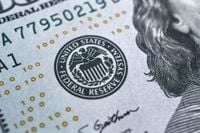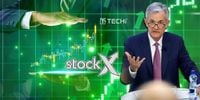Wall Street’s seemingly unstoppable rally hit the brakes on Tuesday, September 23, 2025, as investors digested a fresh warning from Federal Reserve Chair Jerome Powell about the lofty valuations in U.S. equity markets. After a string of record-setting sessions that saw the S&P 500 and Nasdaq climb to new heights, Powell’s remarks in Rhode Island sent a ripple of caution through the market, prompting a broad retreat—especially among the high-flying technology and AI-linked stocks that have powered much of the year’s gains.
“Equity prices are fairly highly valued,” Powell stated, according to The Economic Times and CNBC, during his speech. He went on to describe the Fed’s current predicament as a “challenging situation,” with “near-term risks to inflation tilted to the upside and risks to employment to the downside — a challenging situation.” He concluded, “Two-sided risks mean that there is no risk-free path.” The Fed Chair’s candor, coming just a week after the central bank trimmed its benchmark interest rate by 25 basis points to a range of 4 to 4.25%, left investors uncertain about the likelihood of further rate cuts this year.
The market’s response was swift. The S&P 500 (^GSPC) slipped 0.55% to close at 6,656.92, snapping a three-day winning streak after reaching a new intraday high earlier in the session. The tech-heavy Nasdaq Composite (^IXIC) dropped 0.95% to finish at 22,573.47, weighed down by major technology stocks. Nvidia, one of the AI sector’s darlings, fell 2.8% to around $178.43, while Oracle slid 4.4% and Amazon also posted losses. The Dow Jones Industrial Average (^DJI) ended 88.76 points lower, or 0.19%, at 46,292.78. Even the Russell 2000, which had briefly touched an all-time high earlier in the day, reversed to close down 0.2%.
Much of the market’s anxiety was centered on the sustainability of the AI-driven rally. Nvidia’s recent $100 billion investment deal with OpenAI, while initially cheered, has drawn skepticism from some investors who worry about the possibility of circular financing and whether the energy infrastructure can keep pace with the sector’s explosive growth. “Investors questioned the sustainability of the AI deal,” The Economic Times reported, reflecting broader caution after a period of strong gains in AI-linked stocks.
Amid the turbulence, Micron Technology stood out as a bright spot. The memory chipmaker reported robust fiscal fourth-quarter results, with revenue hitting $11.3 billion and adjusted earnings per share of $3.03—both surpassing analyst expectations. Fueled by AI-related demand, Micron’s sales are projected to jump nearly 40% this year, underscoring its central role in the ongoing AI buildout. The company’s stock rose 1.09% to $166.41, and its upbeat forecast for the coming quarter offered a glimmer of hope to tech investors looking for positive momentum. As Bloomberg noted, “Micron Technology Inc., the largest US maker of computer memory chips, gave an upbeat forecast for the current quarter after the market closed, which could offer fresh support to tech stocks when traders return.”
Other market movers painted a mixed picture. AutoZone shares dropped 3% after weaker-than-expected fiscal Q4 earnings and revenue. Boeing gained 1% following deals with Uzbekistan Airways and China, supporting optimism for aerospace exports. IonQ, a quantum computing firm, saw its shares jump 3% after announcing a milestone in quantum internet technology, boosting the broader quantum sector.
Gold, meanwhile, continued its remarkable ascent. Futures surged to a fresh intraday record of $3,824.60 per ounce before settling near $3,796.50, up 0.57% on the day and a staggering 44% year-to-date. Goldman Sachs reiterated its forecast of $4,000 per ounce by mid-2026, while UBS projects $3,900 within the next year. The precious metal’s rally reflects persistent concerns about inflation, geopolitical uncertainty, and the search for safe havens as traditional assets wobble.
Within the S&P 500, sector performance was a study in contrasts. Utilities (+0.54%), Real Estate (+0.81%), and Consumer Staples (+0.36%) eked out gains, while Information Technology (-1.14%), Consumer Discretionary (-1.44%), and Communication Services (-0.52%) bore the brunt of the selling. The “Magnificent Seven” technology stocks, so often the market’s leaders, mostly finished in the red.
Despite the day’s losses, the AI sector remains a focal point for investors. Nvidia continues to dominate as a provider of GPUs powering most AI models, while Micron benefits from the surging demand for high-bandwidth memory crucial for AI workloads. Amazon, Microsoft, and Google (Alphabet) are embedding AI services into their vast cloud platforms, generating recurring revenue and reinforcing their positions as industry heavyweights. Quantum computing firms like IonQ and Rigetti Computing have also seen shares rise on recent milestones, signaling growing investor interest in next-generation technologies.
Yet, not everyone is convinced that Powell’s comments spell trouble for the bull market. Tom Lee, Head of Research at Fundstrat, took to social media platform X to urge calm, suggesting that Powell’s language was standard central bank caution rather than a harbinger of doom. “When was the last time the Fed ever said stocks are ‘attractively priced’? (Hint: never),” Lee quipped, adding, “Please don’t see this as any ominous sign.” According to Benzinga, Lee’s view is that the Fed’s acknowledgment of high valuations reflects current conditions, not a signal of imminent policy tightening or a market reversal.
Powell, for his part, emphasized that the Fed’s policy is not on a preset course. Future moves will depend heavily on incoming economic data, particularly the labor market and inflation trends. Investors are now laser-focused on Friday’s release of the Personal Consumption Expenditures (PCE) index—the Fed’s preferred inflation gauge. A stronger-than-expected reading could reinforce Powell’s warning and temper expectations for further rate cuts this year. As The Economic Times noted, “Markets are now focused on Friday’s release of the Personal Consumption Expenditures (PCE) index, the Fed’s preferred inflation gauge. A stronger-than-expected reading could reinforce Powell’s warning and temper expectations for aggressive easing.”
Adding to the uncertainty, Powell addressed questions about the potential impact of artificial intelligence on the economy. He called it “too early” to declare AI the most disruptive economic force of our time, acknowledging both the potential for job displacement and the historical tendency for innovation to create new employment opportunities. “Some jobs will be phased out, some will evolve, and new ones will come,” Powell said, noting that the full effects are still difficult to predict.
Looking ahead, market volatility could rise as investors weigh the implications of Powell’s remarks, upcoming inflation data, and the intensifying earnings season. Political uncertainty, including the possibility of a government shutdown by September 30, looms in the background, adding yet another layer of complexity to the market outlook.
For now, Wall Street finds itself at a crossroads—caught between the promise of technological innovation, the reality of elevated valuations, and the ever-present challenge of navigating the Fed’s next move. Investors, it seems, will need to keep their wits about them as they chart a course through these turbulent waters.






